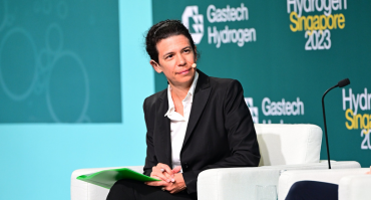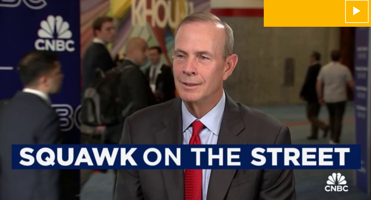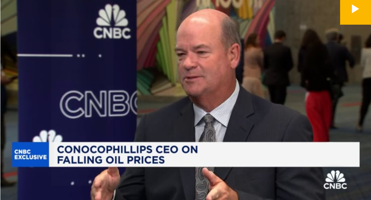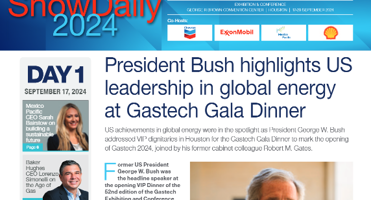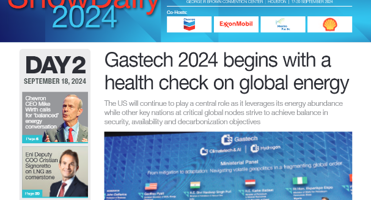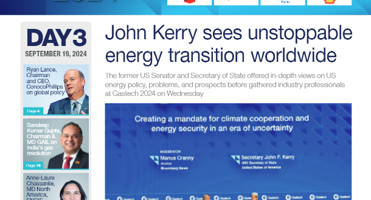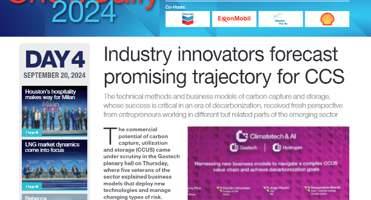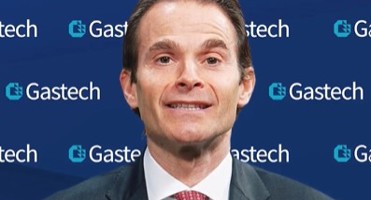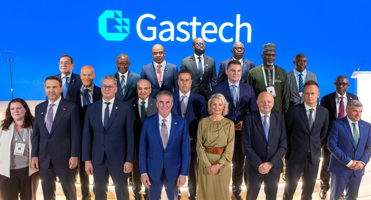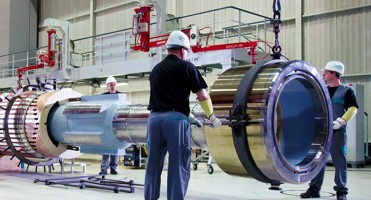The industry-led Hydrogen Council releases new Hydrogen Insights 2024 report at Gastech 2024 that highlights remarkable growth in project commitments despite headwinds facing the emerging sector.
In a state of the union address at Gastech 2024, Ivana Jemelkova, Hydrogen Council CEO, shared findings from a new report released by the Hydrogen Council and McKinsey & Company. The Hydrogen Council, a global CEO coalition that brings together players from around the world, is comprised of companies big and small across the entire value chain, representing 20 different countries from America to the Middle East and Asia.
“We pride ourselves in providing a comprehensive perspective on what is happening in hydrogen, and really guiding the sector on its journey to scale,” said Jemelkova.
The new report, entitled Hydrogen Insights 2024, offers three key takeaways. The first, according to its data, shows undeniably that stakeholders are actually doing the work.
“We are walking the talk. Hydrogen is happening. We’re moving way past announcements, as in press releases, PowerPoints, ideas, and concepts, and really putting money on the table.
“So real projects and real investments are occurring in a really difficult environment,” said Jemelkova.
There’s been a seven-fold increase in capital to $75 billion in four years. This is across over 434 different projects that have reached the final investment stage, compared to 102 projects in 2020. Additional findings suggest growing project maturity.
“We’re not only reporting another increase in announced projects, instead we are really looking at a clear shift from that announcement stage to the advanced project stage and that’s exciting.”
But it’s not all good. The report also revealed that certain challenges remain.
“It’s a complex time for the energy transition because we are facing all kinds of headwinds—macroeconomic headwinds, clean energy being affected by inflation, interest rates, geopolitics, supply chain constraints—you name it. There are many.
“What is perhaps more specific to hydrogen are, number one, the regulatory uncertainties. We really saw a surge in interest and a surge in national hydrogen strategies, but not all of them have translated into real, workable, and practical regulations. And that is a dangerous place to be because, you know, on paper, it’s all there, but in reality, we are missing some of the key building blocks, and that is a real obstacle.”
“Another key issue that is impacting hydrogen projects is the cost of renewables.
“Again, this is not a hydrogen-unique or hydrogen-specific or hydrogen-only issue. It’s a reality that we find ourselves in, but it is definitely affecting renewable hydrogen projects.
“The Council is trying to be very thoughtful about what we think happens next, and what all of this means for our deployment volumes.
“We had a look at the announced supply that should be developed by 2030, and we think that about a quarter of it will really come online. Again, we’re trying to be extremely, extremely thoughtful and careful in our analysis, comparing the projected pipeline to actual delivery.”
Despite the undeniable progress that has been made, there’s still plenty of work to do.
“We need to address the issues that are hindering project execution,” said Jemelkova. “We need to be able to go ahead and execute all these ideas and bring our projects into reality, otherwise, we’ll end up being stuck halfway.”
“Some things are going well, and some things are not going well, but seeing the many familiar faces in this room, I really do want to encourage you all to digest it, acknowledge it, and celebrate.
“Celebrate, at least for a moment, because your hard work has gotten us to this place again—$75 billion in committed capital. So real projects, real investments, despite massive headwinds, so thank you.
“Please keep up the good work. And again, connect, find me, find us, and let’s do this.”














